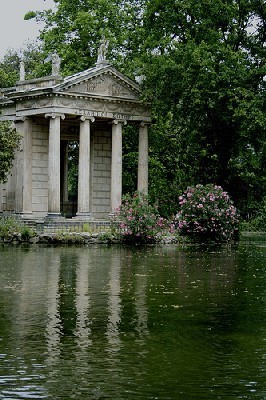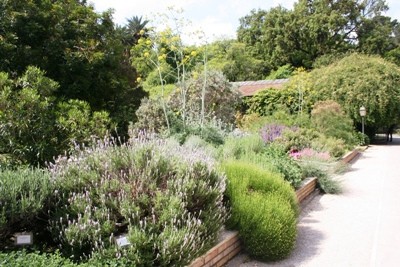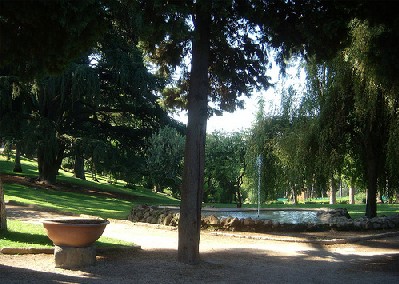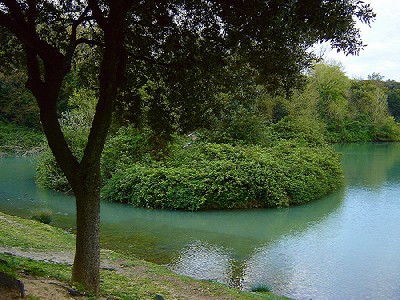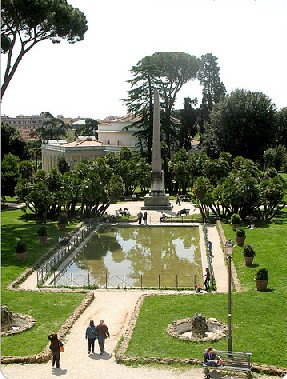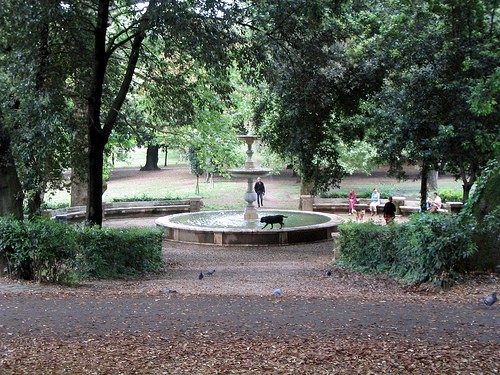
Roseto Comunale (Municipal Rose Garden)
The Roseto Comunale is one of the most romantic gardens in Rome, due to its location and to the abundance of one of the finest and most elegant flowers: the rose.
This lies at the foot of the Aventine and it is open only in spring to allow citizens and tourists to admire more than 1000 species of roses that fill with colour, elegance and fragrant scents the whole garden.
Walking through the garden is like walking into a fairy tale theme, where the delicacy of nature blends with the magic of the beautiful view of the Palatine and the Circus Maximus.
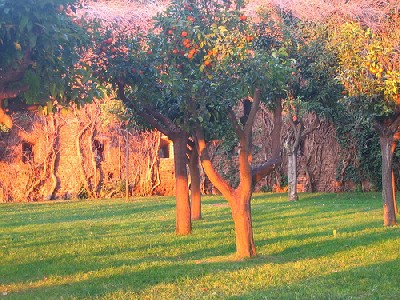
Parco Savello or Giardino degli Aranci (Savello Park or Garden of Oranges)
This is a small rectangular garden located in a castle that the Savelli family in the fourteenth century built on the Aventine.
The garden is still surrounded by the thick walls of the castle and it is famous for the splendid view it offers to tourists and visitors. From here you can embrace a very broad view of the city including the River Tiber and St. Peter’s Basilica. Savello Park is also known as the Garden of Oranges due to the orange trees planted by St. Dominic, who founded his monastery here.
Villa Borghese
Villa Borghese park is the most famous and popular of Rome. Even if it isn’t the largest (Villa Ada and Villa Pamphili are larger) it remains the most loved by Romans and the best known by tourists.
It is a green oasis in the heart of Rome and the Romans use it for running, walking, picnicking. But Villa Borghese is also rich in museums (the Gallery of Modern Art, the Etruscan Museum, the Carlo Bilotti Museum and the Museum and Gallery Borghese, rich in famous paintings and sculptures, including some by Bernini)
Inside the park there is also the Bio-park, a zoo housing animals of every kind, and the Globe Theatre, a Victorian-style theatre offering a major program in the summer.
There are also amusements designed for children, such as the recreation centre Casina Raffaello and the House of Cinema.
The Botanical Garden of Rome has twelve acres of parkland and approximately 2,000 square feet of greenhouses. For this reason it is one of the largest in Italy. The Botanical Garden isn’t only important for the great variety of plants, of interest to scholars and experts, but it is also important for creating particularly effective and interesting facilities for disabled are. There are battery-powered mobile units that go on a dedicated path arriving even on the hill and there was set up a “giardino dei profumi ” (scent garden) where the classification of plants are in Braille for blind people.
Villa Celimontana is located in the Renaissance Celio Park (Parco del Celio) and it is situated between the Colosseum and the Baths of Caracalla. This park is very well known by jazz lovers thanks to the many concerts that are held here every year.
In the Villa there is also the headquarters of the Italian Geographic Society, which has in its archives some maps of Italy of great historical and scientific importance.
Villa Pamphili
Villa Pamphili is a large park on the outskirts of Rome. Its perimeter is more than 9 km and therefore offers excellent recreational opportunities for cyclists who can discover the park by themselves or with organized tours. In the park there are panoramic terraces and the beautiful Villa Algardi.
Villa Torlonia
Villa Torlonia is located about 2 km far from Porta Pia. The Villa is best known as the “home of Mussolini” and it is worth a visit to admire the Limonaia and the Casina delle Civette, an example of Art Nouveau.
Close to the Casina delle Civette there is “Technotown”, a space dedicated to children with special TV news and animated documentaries about the life in ancient Rome.
Villa Ada
Villa Ada is the park that has the largest number of animals and plants. There’s also a skating rink and fitness trails for sport lovers.
Photos by: Shichiroku, bennyrosso, Fr3yja, Lonely Pilgrim, visionet, Paolo Panno, zioWoody, cristiana, piraino and filmarino.
